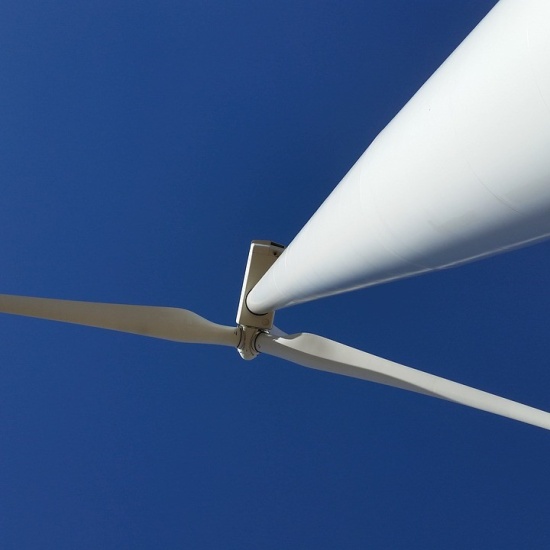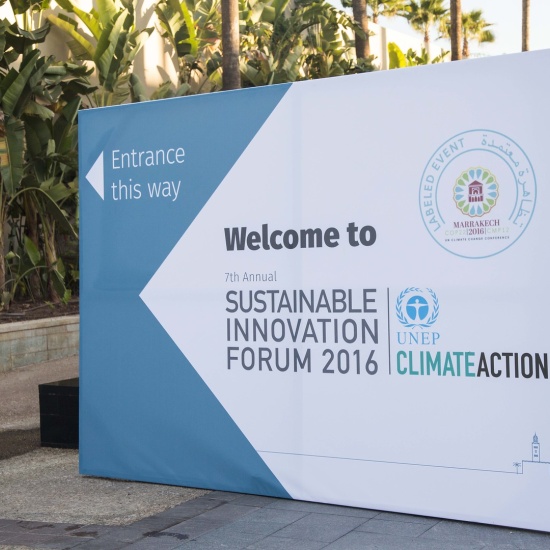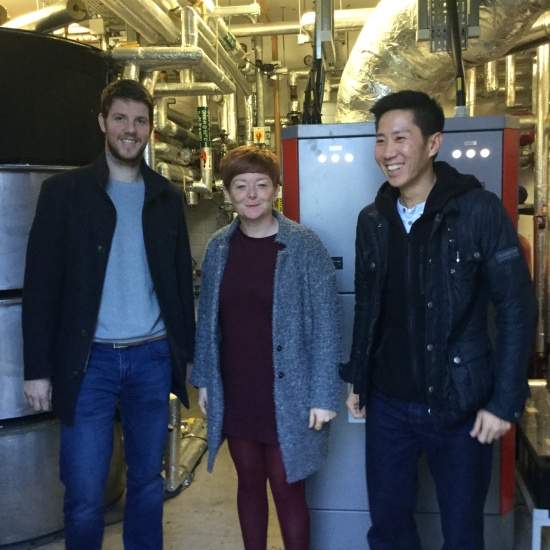Carbon taxes for Ireland
Carbon pricing first identifies the 'external costs' of greenhouse gas emissions and then ties this cost back to its source. It has been identified as a potential part of the solution to help Ireland to decarbonise.

Irelands climate targets
Ireland emitted almost 61 million tonnes of greenhouse gases in 2017 from generating electricity, heating and cooling our buildings, transport and agriculture. This is a slight reduction of 1% when compared to 2016 emissions, but is still three million tonnes above the 2017 target according to the EPA. This compliance gap is equivalent to the carbon dioxide emissions from approximately half a million Irish homes; 750,000 dairy cows or one million petrol / diesel Irish cars.
Ireland's policy objective is to reduce CO2 emissions by 80% between 1990 and 2050 across the electricity, heat and transport sectors, and to achieve climate neutrality in the agriculture and land-use sectors. The scale of this challenge for all sectors is significant. For example in the energy sector alone, over 90% of Ireland's energy is still derived from fossil fuels according to the SEAI Energy in Ireland 2018 Report.
Carbon Pricing in Ireland
One potential part of the solution which could help Ireland to decarbonise is to introduce carbon pricing. Carbon pricing first identifies the 'external costs' of greenhouse gas emissions e.g. costs to the healthcare system due to poor air quality caused by burning fossil fuels or costs to agricultural productivity resulting from droughts or flooding. It then ties this cost back to its source, usually in the form of a price per tonne on carbon dioxide emitted. The idea behind carbon pricing is to incentivise those creating the emissions to change their behaviour - they can either reduce their emissions or continue to emit and pay for their emissions.
There are many ways to implement carbon pricing. Two of the more common carbon pricing mechanisms are cap and trade systems and carbon taxes. Approximately 50 countries worldwide have either implemented or scheduled implementation of carbon pricing initiatives. What many people outside the energy / climate sectors may be unaware of is that Ireland already operates both of these mechanisms.
- Ireland is part of the EU Emission Trading System (ETS), a cap and trade system that sets an overall cap on emissions from power stations and industrial plants throughout the EU. Each power station or industrial plant in the EU receives a number of free emissions credits. They must either stay within their allocation or else purchase credits from other facilities, effectively buying compliance. This incentivises operators to reduce emissions.
- Ireland also applies a carbon tax of €20 per tonne of carbon emitted through the direct use of fossil fuels like oil, petrol, diesel and gas in heating homes and businesses or running cars and trucks.
The Irish Government's decision not to increase the level of the carbon tax in the 2019 Budget prompted much discussion and has drawn considerable criticism amongst proponents of climate action. However, carbon taxes are very much on the agenda in Ireland, with recent indications from both the Taoiseach Leo Varadkar (Ireland's Prime Minister) and Minister for Communications, Climate and Environment, Richard Bruton that carbon tax increases are being given careful consideration.
Recent protests by the gilets jaunes in France were sparked after the French Government planned to raise carbon taxes on petrol and diesel by 2.9 cents and 6.5 cents per litre respectively. This highlights the importance of consulting and communicating potential introduction of, or increases in the level of carbon tax. It is important that the rationale for carbon taxes, how they work and why they are desirable for Ireland is well communicated.
Talking Climate Outreach
While attending UNFCCC COP24 in Katowice, Poland in December I met with George Marshall and Darragh Conway. Marshall is the founder of Climate Outreach, a network of social scientists and communication specialists focused on helping organisations better communicate climate change with their audiences; and author of "Don't Even Think About It: Why Our Brains Are Wired to Ignore Climate Change" (2014) and "Carbon Detox" (2007). Conway is a lead legal counsel at Climate Focus, an advisory firm based in Amsterdam that specialises in climate change mitigation; and an internationally-recognised expert on carbon pricing.
Marshall and Conway are the lead authors on the World Bank's Guide to Communicating Carbon Pricing aimed primarily at policymakers with additional recommendations for businesses and civil society organisations.
I sought George and Darragh' s perspectives on a number of items relevant to us here in Ireland as we contemplate the potential trajectories of carbon taxes.
Why is effective communication of carbon pricing important?
George: Communications complement policymaking by explaining the reasons for carbon pricing, how it works, and why it is desirable. Good communications involve policymakers listening to stakeholders and understanding their concerns - this can in turn lead to better policy decisions. If key stakeholders and voters do not understand or support the policy, however intelligent and well designed, it will be vulnerable to attack, concessions to powerful interests, and/or removal. One need only look at the recent protests in France for an example of stakeholder discontent relating to carbon tax policies.
What are the fundamentals of successfully communicating/implementing carbon taxes?
George: In order for carbon taxes not to be viewed as 'just another tax' it is important that Governments are clear what the revenue raised will be used for. Use of revenues should ideally be redirected specifically towards highly visible causes that are relevant to citizens, such as efforts to mitigate or adapt to climate change, measures that compensate poor or vulnerable households for any additional costs they incur, or direct rebates to households. Using the funds collected as 'general taxation revenue' is often a lot less popular and therefore very difficult to communicate.
It is also important that the expert technical language that is appropriate for a policy discussion is avoided in public discourse and replaced with accessible and conventional language that is more widely understood.
Trust in the messenger is often more important than the message itself. If government, economists, and policy advisers are not trusted, it is essential to recruit communicators who are trusted by target audiences. These recommendations are laid out in the Guide to Communicating Carbon Pricing.
Can you provide an example of effective carbon tax communications?
Darragh: Unfortunately, good examples are still relatively rare.
One worth mentioning is Chile, where, rather than just promoting the carbon tax itself, communications have focused on the broader transition to a low-carbon economy. By presenting carbon pricing as just one of the multiple of policy instruments that will be used to achieve this goal, the carbon tax can be situated as part of an attractive and positive vision for the future - linked to innovation, new employment opportunities and improved health.
Looking beyond carbon taxes, the California Cap and Trade programme presents a good example of how the visibility of revenue generated can lead to enhanced public support of carbon pricing policy. By September 2016, the California Cap and Trade program had generated nearly $4.1 billion in total and this was spent on visible solutions such as electric school buses, electric cars and trucks, new light rail stations, car sharing programs and investments in low-income communities. All grantees displayed a logo to show that they were funded by the programme.
Have you seen examples of carbon tax communications which did not seem to work?
Darragh: Australia's 2013 federal election provides important lessons for other countries on developing strong carbon pricing communications that can withstand election cycles. Strong opposition by Australia's Liberal Party led to the repeal of Australia's Carbon Pricing Mechanism when the centre-right Liberal/National Coalition came into power.
Organised and well-resourced opponents can undermine a carbon pricing policy, especially if they are able to dominate the public framing and media debate. Communicators can learn from this by conducting audience research to anticipate opposing views at an early stage and identifying trusted communicators. If trust in the government is low, the public may be less likely to trust government explanations of carbon pricing policy. A strong public engagement strategy should include a range of trusted peer communicators and networks.
Australia's Carbon Pricing Mechanism was also rather complex. Policymakers may want to learn from this by considering keeping the design of the carbon price itself as simple as possible while still being effective. This will help enable communications too, as comprehensible and "common sense" mechanisms are far easier to communicate. For more complex mechanisms, such as emissions trading, it may be more effective to focus on "what it does" than to explain "how it works". The expert language used in economics, finance, or climate science reports is appropriate for policy discussions but should be avoided in public communications, and replaced with accessible and more conventional language.
Having spoken to George and Darragh, I got to thinking about what all this might mean for homeowners and businesses. And how they might begin to prepare better for Ireland's sustainable energy transition that will likely include higher carbon taxes.
Homeowners could consider applying for one of SEAI's home energy grants to help make their homes more comfortable and healthy, lower their energy bills, and reduce the amount which they may pay when the carbon tax rate increases. Communities can consider the supports offered by the SEAI community grants to assist energy efficiency community projects through capital funding, partnerships and technical support.
Individuals and companies can apply for an SEAI electric vehicle grant of up to €5,000 to assist with the cost of purchasing an EV. As well as reducing exposure to potential increases in carbon taxes, other benefits such as lower motor tax and lower VRT also exist. Businesses can benefit from grants and supports offered through SEAI business grants, and companies and academic institutions can consider availing of SEAI research funding to help develop the innovative solutions required to deliver on Ireland's energy and climate commitments.



